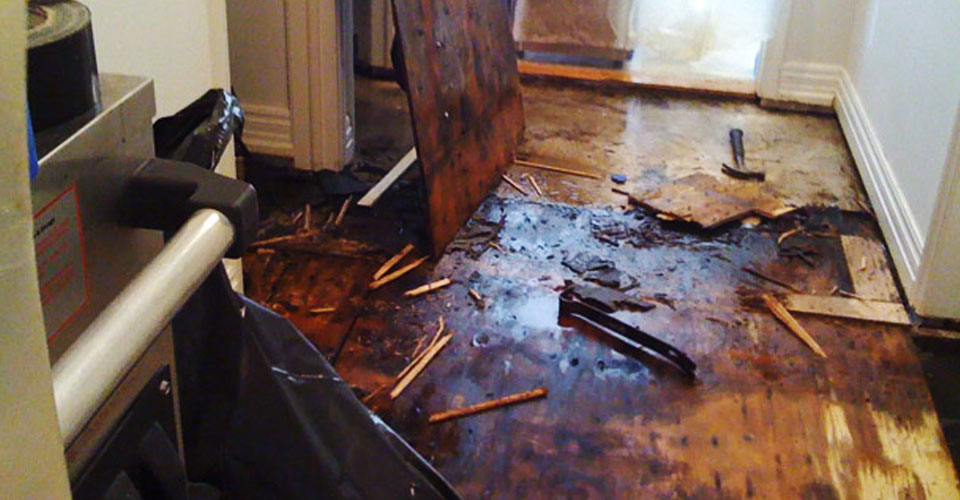6 Water Damage Restoration Do's and Don'ts.
6 Water Damage Restoration Do's and Don'ts.
Blog Article
What're your ideas with regards to 5 Home Safety Tips To Reduce The Risk Of Fire And Water Damage?

Water provides life, water breach on components where it's not expected to be can result in damage. It can peel off away surface areas and erode the structure if the water saturates into your structure. Mold and mildew and also mildew also thrive in a wet atmosphere, which can be dangerous for your health. Residences with water damage scent old as well as moldy.
Water can come from several sources such as tropical storms, floods, burst pipelines, leakages, and drain concerns. In case you experience water damages, it would be great to understand some security preventative measures. Here are a few guidelines on exactly how to take care of water damage.
Do Prioritize Residence Insurance Coverage Coverage
Water damages from flood because of hefty winds is seasonal. You can additionally experience a sudden flooding when a faulty pipe unexpectedly breaks right into your house. It would certainly be best to have residence insurance that covers both acts of God such as all-natural calamities, and emergencies like broken plumbing.
Do Not Neglect to Turn Off Utilities
In the event of a disaster, particularly if you live in a flood-prone location, it would be advisable to switch off the primary electric circuit. This cuts off power to your whole residence, avoiding electric shocks when water comes in as it is a conductor. Additionally, do not neglect to turn off the main water line valve. When floodwaters are high, furniture will move around and cause damage. Having the primary valve turned off avoids further damage.
Do Stay Proactive and also Heed Weather Condition Notifies
Listen to discharge warnings if you live near a river, lake, or creek . Doing so reduces prospective residential or commercial property damages.
Don't Disregard the Roofing System
You can avoid rainfall damages if there are no openings as well as leaks in your roofing system. This will prevent water from flowing down your wall surfaces as well as soaking your ceiling.
Do Take Note Of Small Leakages
A burst pipeline does not happen over night. Generally, there are red flags that indicate you have actually compromised pipelines in your house. For instance, you might see bubbling paint, peeling wallpaper, water touches, water spots, or trickling sounds behind the walls. At some point, this pipeline will burst. Ideally, you ought to not await points to rise. Have your plumbing fixed prior to it causes substantial damages.
Don't Panic in Case of a Ruptured Pipeline
Maintaining your clearheadedness is crucial in a time of dilemma. Because it will certainly stifle you from acting fast, stressing will only intensify the issue. When it pertains to water damage, timing is vital. The longer you wait, the more damage you can anticipate. Thus, if a pipe bursts in your house, right away shut off your major water valve to remove the resource. Then unplug all electrical outlets in the location or turn off the circuit breaker for that part of the house. Call a credible water damages restoration specialist for support.
Water offers life, water invasion on parts where it's not supposed to be can result in damages. Houses with water damage scent mildewy and old.
Water damages from flood charges to heavy winds is seasonal. You might observe bubbling paint, peeling off wallpaper, water streaks, water spots, or dripping noises behind the walls. When it comes to water damage, timing is vital.
Some Do's & Don't When Dealing with a Water Damage
DO:
Make sure the water source has been eliminated. Contact a plumber if needed. Turn off circuit breakers supplying electricity to wet areas and unplug any electronics that are on wet carpet or surfaces Remove small furniture items Remove as much excess water as possible by mopping or blotting; Use WHITE towels to blot wet carpeting Wipe water from wooden furniture after removing anything on it Remove and prop up wet upholstery cushions for even drying (check for any bleeding) Pin up curtains or furniture skirts if needed Place aluminum foil, saucers or wood blocks between furniture legs and wet carpet Turn on air conditioning for maximum drying in winter and open windows in the summer Open any drawers and cabinets affected for complete drying but do not force them open Remove any valuable art objects or paintings to a safe, dry place Open any suitcases or luggage that may have been affected to dry, preferably in sunlight Hang any fur or leather goods to dry at room temperature Punch small holes in sagging ceilings to relieve trapped water (don't forget to place pans beneath!); however, if the ceiling is sagging extremely low, stay out of the room and we'll take care of it DO NOT:
Leave wet fabrics in place; dry them as soon as possible Leave books, magazines or any other colored items on wet carpets or floor Use your household vacuum to remove water Use TV's or other electronics/appliances while standing on wet carpets or floors; especially not on wet concrete floors Turn on ceiling fixtures if the ceiling is wet Turn your heat up, unless instructed otherwise

Hopefully you enjoyed reading our post about What You Can Do At Home To Prevent Fire And Water Damage. Thank you for taking the time to browse our article. So long as you enjoyed reading our page kindly make sure you remember to pass it around. We treasure reading our article about 5 Home Safety Tips To Reduce The Risk Of Fire And Water Damage.
Report this page